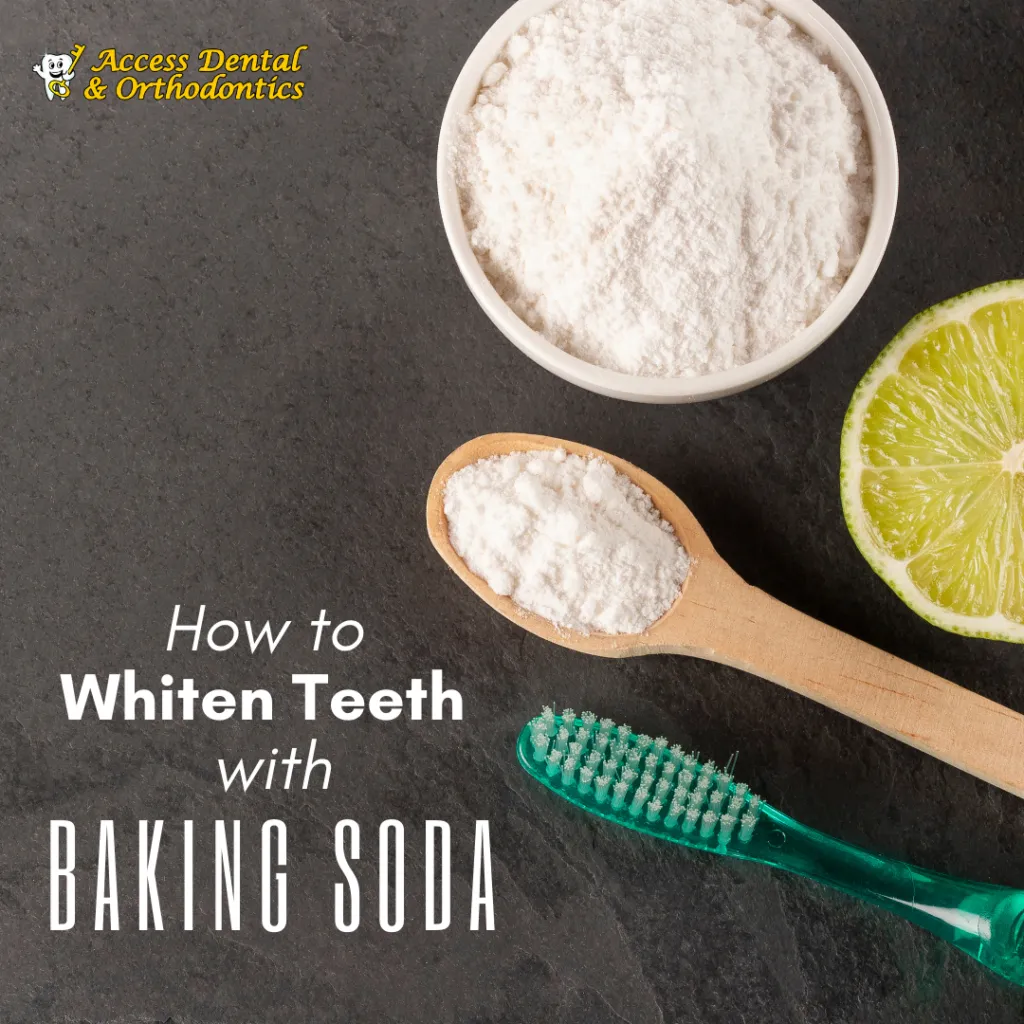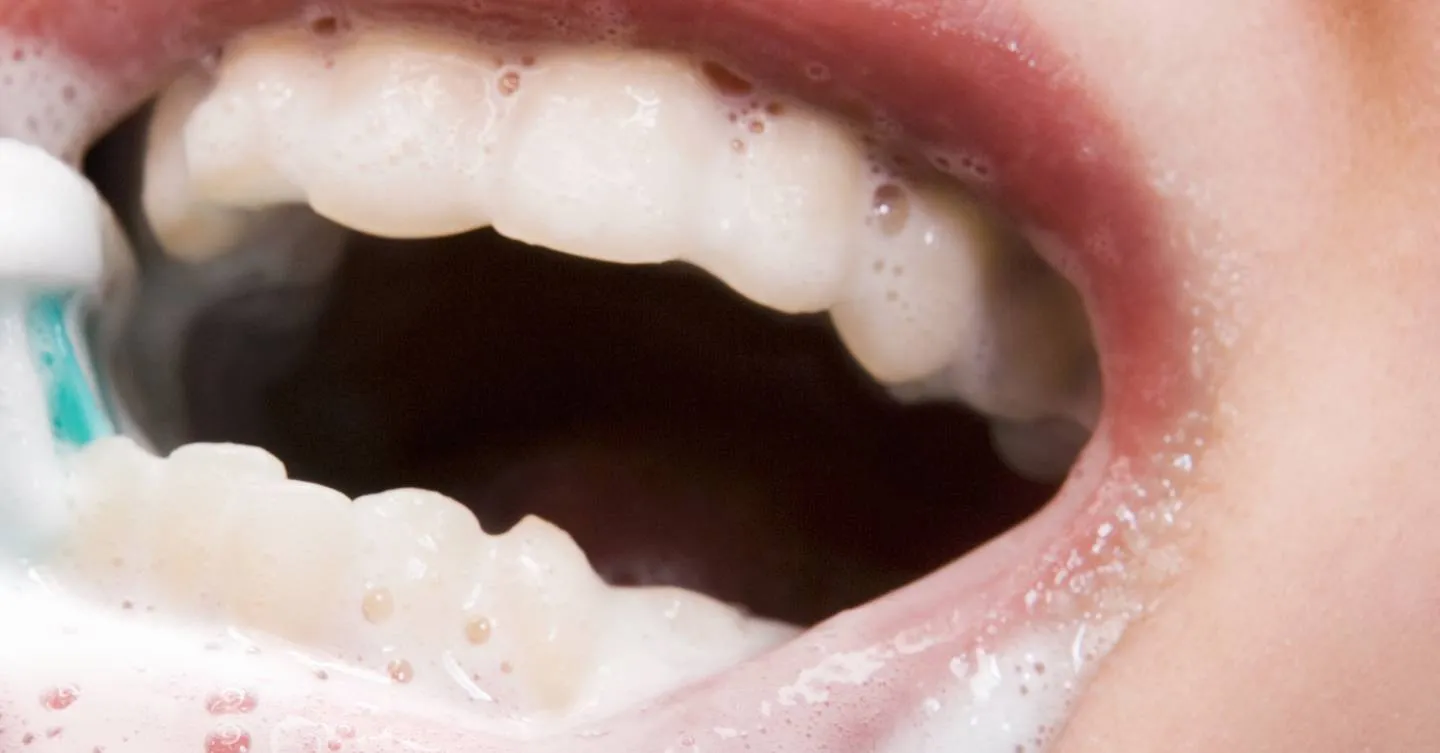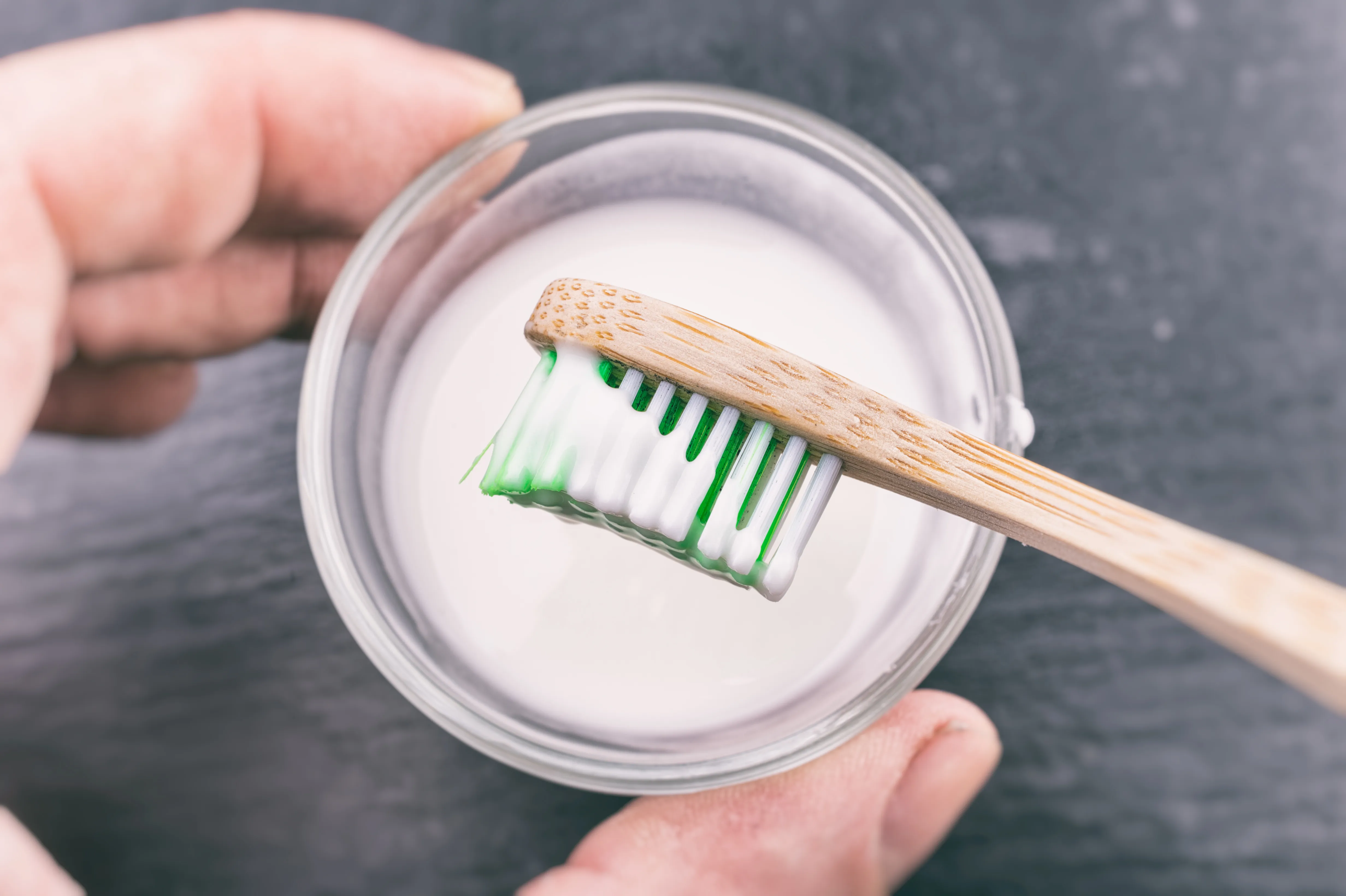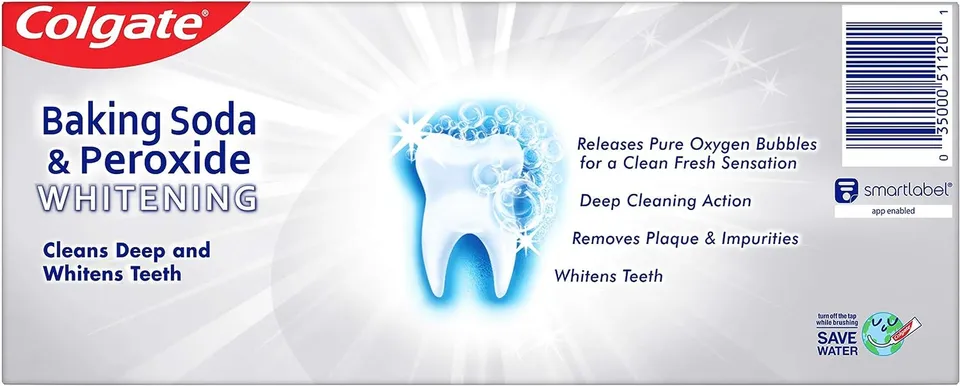What is Teeth Whitening Baking Soda & Peroxide?
Teeth whitening using baking soda and hydrogen peroxide is a popular DIY method for achieving a brighter smile. It involves using a mixture of these two readily available household ingredients to remove stains and discoloration from the surface of your teeth. This approach has gained traction due to its affordability and accessibility, making it an appealing option for those looking to enhance their dental aesthetics without the cost of professional treatments. The effectiveness, however, can vary depending on the individual and the type of stains present, ranging from surface-level stains to deeper discoloration caused by aging or other factors. Understanding the principles behind this method, along with its potential benefits and risks, is crucial before incorporating it into your oral hygiene routine.
How Baking Soda & Peroxide Whiten Teeth
The teeth whitening process using baking soda and hydrogen peroxide relies on a combination of mechanical and chemical actions. Baking soda acts as a mild abrasive, helping to scrub away surface stains that accumulate from coffee, tea, wine, and other foods and drinks. Hydrogen peroxide, on the other hand, functions as a bleaching agent. When it comes into contact with the teeth, it releases oxygen molecules that penetrate the enamel, breaking down the stain molecules and lightening the overall color of the teeth. This dual approach provides a two-pronged effect: the physical removal of surface stains and the chemical lightening of deeper discoloration. It is important to remember that the effectiveness can vary, and it’s not a substitute for professional dental care. Regular use of this mixture might result in sensitivity, which is why it is crucial to use it with caution.
The Science Behind Baking Soda

Baking soda, or sodium bicarbonate, is a crystalline powder that is mildly alkaline. In the context of teeth whitening, its primary function is to act as a gentle abrasive. It has a slightly rough texture that helps to physically scrub away surface stains, such as those caused by food, drinks, and tobacco. The abrasive action helps to remove the staining particles from the surface of the enamel, giving teeth a cleaner and brighter appearance. This mechanical cleaning action is a fundamental part of its whitening effect, as it can help to reveal the natural whiteness of the teeth by removing external stains. However, it is important to use baking soda with care, as excessive abrasion can damage the enamel and lead to increased sensitivity. Proper brushing technique and moderation are key to harnessing the cleaning power of baking soda without causing harm.
The Role of Peroxide
Hydrogen peroxide is the key bleaching agent in this teeth whitening combination. It’s a chemical compound that releases oxygen when it comes into contact with teeth. These oxygen molecules penetrate the enamel and break down the stain molecules, which are the pigmented compounds causing the discoloration. This process lightens the appearance of the teeth. The concentration of hydrogen peroxide can influence its effectiveness; higher concentrations may yield faster results but also increase the risk of sensitivity. The duration of contact with the teeth also matters; longer application times can lead to more significant whitening, but they may also increase the risk of side effects. Safety and caution are essential when using hydrogen peroxide for teeth whitening to avoid damaging the enamel or causing irritation to the gums.
Step-by-Step Guide to Baking Soda Teeth Whitening
Using baking soda and hydrogen peroxide for teeth whitening requires a careful and precise process. This step-by-step guide will help you achieve the best possible results with safety. Begin by gathering your supplies, which include baking soda, 3% hydrogen peroxide (the concentration typically found at drugstores), a small bowl, and a toothbrush. Mix one tablespoon of baking soda with one to two tablespoons of hydrogen peroxide in the bowl until a paste forms. It should be thick enough to adhere to your teeth. Next, using your toothbrush, apply the paste evenly to your teeth, making sure to cover all surfaces. Allow the paste to sit on your teeth for about two minutes, and avoid excessive brushing, as this could damage the enamel. After two minutes, rinse your mouth thoroughly with water and brush your teeth again with regular toothpaste to remove any remaining paste residue. For best results, repeat this process once or twice a week.
Preparing Your Mixture

The preparation of the baking soda and hydrogen peroxide mixture is a crucial step in the teeth whitening process. The correct ratio ensures the effectiveness and safety of the treatment. Start by measuring one tablespoon of baking soda into a small, clean bowl. Then, add 3% hydrogen peroxide gradually, starting with one tablespoon. Mix the two ingredients together using your toothbrush or a small utensil. You want to achieve a paste-like consistency that is thick enough to cling to your teeth but not too runny. If the mixture is too dry, add more hydrogen peroxide a few drops at a time until you get the desired consistency. Conversely, if it’s too watery, add a little more baking soda. Make sure to prepare a fresh mixture each time you want to use it, and avoid storing any leftover mixture for future use.
Application Techniques
Proper application techniques are essential for maximizing the effectiveness of the baking soda and hydrogen peroxide teeth whitening method while minimizing potential risks. Start by ensuring your teeth are clean and dry. Using your toothbrush, gently apply a thin layer of the paste evenly across all surfaces of your teeth, making sure to cover every tooth. Avoid rubbing the paste vigorously, as this could cause abrasion. Instead, focus on gently spreading the paste over the teeth to ensure even coverage. Once the paste is applied, allow it to sit on your teeth for about two minutes. Avoid swallowing the mixture during this time. After two minutes, rinse your mouth thoroughly with water to remove any remaining paste. Finally, brush your teeth with regular toothpaste to remove any remaining residue and to neutralize the alkaline effect of baking soda.
Whitening Frequency and Duration
The frequency and duration of using the baking soda and hydrogen peroxide mixture are critical for safety and effectiveness. It is generally recommended to use this method once or twice a week, not more. Overuse can lead to enamel erosion and increased sensitivity. When applying the paste, it’s best to leave it on your teeth for a maximum of two minutes per application. This allows the peroxide to act on the stains without prolonged exposure, which could cause damage. During the initial few weeks of use, observe how your teeth respond. If you notice any increased sensitivity or discomfort, decrease the frequency of use or stop using the method altogether. It’s also important to remember that the results of this method may vary from person to person. Some people may see noticeable changes quickly, while others may not see significant results, and it’s not a substitute for professional dental care.
Safety Precautions and Potential Risks

While baking soda and hydrogen peroxide can be effective for teeth whitening, it is important to be aware of the potential risks involved. Overuse or improper application can lead to enamel erosion, making your teeth more susceptible to cavities and sensitivity to hot and cold foods and drinks. Prolonged exposure to hydrogen peroxide can irritate the gums, causing redness, swelling, and discomfort. Some people may experience temporary tooth sensitivity after using this method. To mitigate these risks, use the mixture sparingly, adhering to the recommended frequency and duration. Avoid excessive brushing or applying too much pressure, and if you experience any adverse effects, such as increased sensitivity or gum irritation, discontinue use and consult with your dentist. Regular dental check-ups are essential to monitor the health of your teeth and gums and address any potential issues promptly.
Side Effects of Baking Soda and Peroxide
The use of baking soda and hydrogen peroxide for teeth whitening can sometimes cause side effects, and being aware of these is crucial for safe use. One of the most common side effects is increased tooth sensitivity, which can manifest as a sharp, sudden pain when consuming hot, cold, or sweet foods and drinks. Gum irritation is another potential side effect, including redness, swelling, and tenderness. If you experience any of these issues, it is important to reduce the frequency of use or to discontinue it. In rare cases, prolonged or excessive use can lead to enamel erosion, which can weaken the teeth and make them more vulnerable to decay. If you have any pre-existing dental conditions, such as cavities or gum disease, consult with your dentist before using this method. It’s always advisable to prioritize your dental health and seek professional advice if you experience any concerning symptoms.
Alternatives to Baking Soda and Peroxide
If you’re looking for teeth whitening alternatives, there are several options to explore. Over-the-counter whitening products, such as whitening toothpastes and strips, are readily available. These products contain lower concentrations of peroxide, making them a safer option for those who are sensitive to the ingredient. Another option to consider is using activated charcoal, which, when used in moderation, can help to remove surface stains. It’s important to research these methods and use them with caution. For more significant whitening results, professional treatments are available. Your dentist can offer in-office whitening treatments, which use higher concentrations of peroxide under controlled conditions. They also can provide custom-fitted whitening trays for home use, which are more effective than over-the-counter options. Consulting with a dentist is always recommended to determine the best teeth whitening solution based on your individual needs and dental health.
Professional Teeth Whitening Options

Professional teeth whitening offers a more effective and controlled approach to achieving a brighter smile. Your dentist can provide in-office whitening treatments, which typically involve the use of high-concentration peroxide gels activated by a special light or laser. These treatments are performed under professional supervision, ensuring safe and effective results. Another professional option is custom-fitted whitening trays. Your dentist will take impressions of your teeth and create trays that fit perfectly. You’ll then be provided with a professional-strength whitening gel to use at home. This method allows for more consistent and targeted whitening compared to over-the-counter products. The advantages of professional teeth whitening include faster, more noticeable results, controlled application to protect gums, and the guidance of a dental professional. It is important to have a consultation with your dentist before undergoing any whitening treatment to ensure it’s suitable for your dental health.
Maintaining Your Bright Smile
Once you have achieved a brighter smile, maintaining it requires a consistent and proactive approach. Regular oral hygiene practices are fundamental. Brush your teeth at least twice a day for two minutes each time, using a fluoride toothpaste. Floss daily to remove plaque and food particles from between your teeth and under the gum line. Additionally, schedule regular dental check-ups and professional cleanings. Your dentist can remove any stubborn stains and monitor the health of your teeth and gums. Avoiding or limiting staining foods and drinks is also crucial. Coffee, tea, red wine, and dark-colored berries can contribute to staining. If you consume these, rinse your mouth with water after each consumption, or brush your teeth 30 minutes after to minimize their impact. Consider using a whitening toothpaste or mouthwash to further enhance your smile’s brightness.
Oral Hygiene Practices
Consistent and effective oral hygiene practices are the cornerstone of maintaining a bright and healthy smile. Proper brushing technique is essential. Use a soft-bristled toothbrush and brush your teeth for at least two minutes each time. Make sure to brush all surfaces of your teeth, including the front, back, and chewing surfaces. Angle your toothbrush at a 45-degree angle to your gum line, gently moving it back and forth to remove plaque and bacteria. Flossing daily is equally important for removing plaque and food particles from between your teeth and under the gum line, areas that your toothbrush cannot reach. Use about 18 inches of floss and gently guide it between your teeth, using a sawing motion. Lastly, consider using an antibacterial mouthwash to further reduce the bacteria in your mouth and freshen your breath. Remember, consistent oral hygiene practices are the key to a lasting, bright smile.
Dietary Recommendations

Your diet plays a significant role in the health and appearance of your teeth. Certain foods and drinks can contribute to staining and discoloration, while others promote oral health and help maintain a bright smile. To minimize staining, limit your consumption of coffee, tea, red wine, and dark-colored beverages. If you consume these beverages, rinsing your mouth with water immediately afterward or brushing your teeth about 30 minutes later can help reduce staining. Increase your intake of teeth-friendly foods, such as crunchy fruits and vegetables like apples, celery, and carrots, which can naturally clean your teeth as you eat them. Dairy products, like cheese and yogurt, are rich in calcium and promote enamel strength. Drink plenty of water throughout the day to stay hydrated and help wash away food particles and bacteria. A balanced diet rich in nutrients is essential for overall health, including the health of your teeth and gums.
